Electrical Engineering Labs
Power Your
Future
Hands-on spaces where your ideas take shape
Step into the Technology, Engineering, Arts and Media (TEAM) Labs where you’ll build circuits, test machines, and bring your designs to life. In addition to four engineering labs included in the suite, TEAM houses space for student-run media and entertainment facilities, including a radio station, TV studio, newsroom and games and interactive media. Located in the Information Sciences building, these spaces are designed to give you practical, hands-on experience with the tools and technologies used in the field of electrical engineering as well as communication.
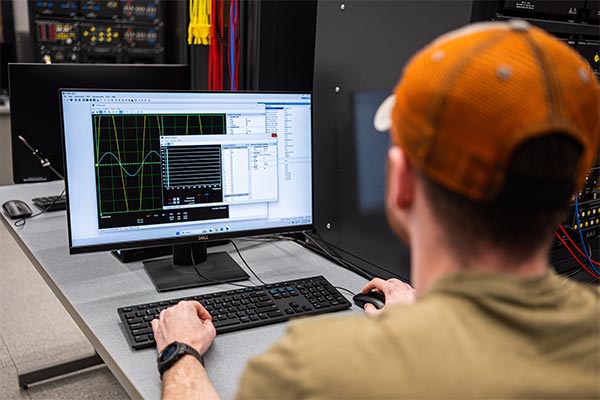
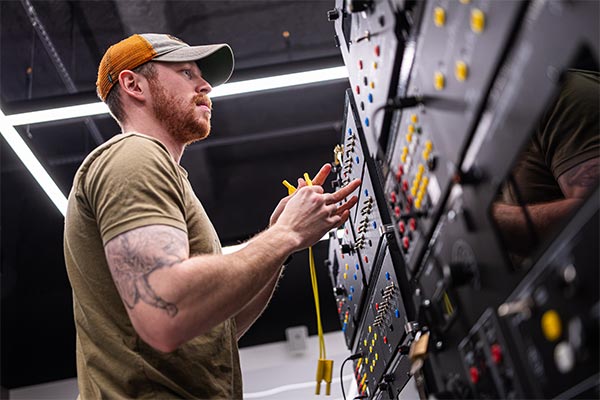
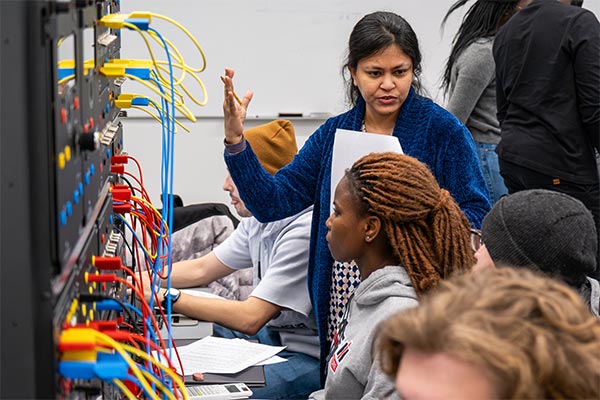

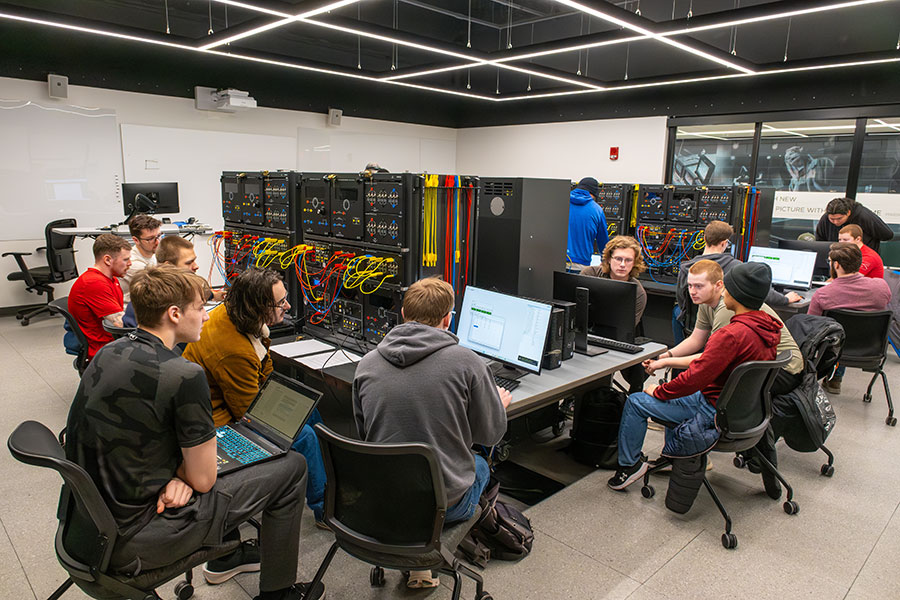
Inside The Labs
A fast look at where learning sparks action
Take a quick visual tour of UW-Green Bay’s electrical engineering lab spaces. This fast-paced video shows real students at work—sketching logic diagrams, wiring circuits, programming automation systems, and testing machines in small, supportive lab settings. With modern equipment and faculty working side-by-side with students, these spaces are built for focus, experimentation and building confidence. Watch to see how hands-on learning comes to life.
Electrical Engineering Labs & Facilities
As an electrical engineering or electrical engineering technology student, you’ll spend time in a variety of specialized labs—each one designed to provide hands-on applications of the theory learned in class. From your first circuits course to your final senior design project, these labs are where your skills come to life.

Electrical Circuits Lab
Room: Information Sciences 1067
This is where your hands-on journey begins. In the Electrical Circuits Lab, you’ll build and test basic analog circuits using breadboards, resistors, capacitors, and multimeters. It’s your first step into understanding how electrical systems work—and the foundation for everything you’ll build later in the program.
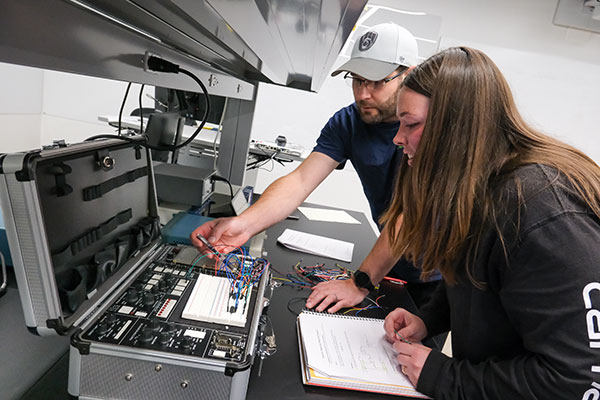
Electronics Lab
Room: Information Sciences 1063
Take your circuit knowledge further in the Electronics Lab. Here, you’ll work with oscilloscopes, signal generators, and logic analyzers to explore both analog and digital systems. You’ll design, debug, and analyze circuits that power everything from microcontrollers to communication systems.
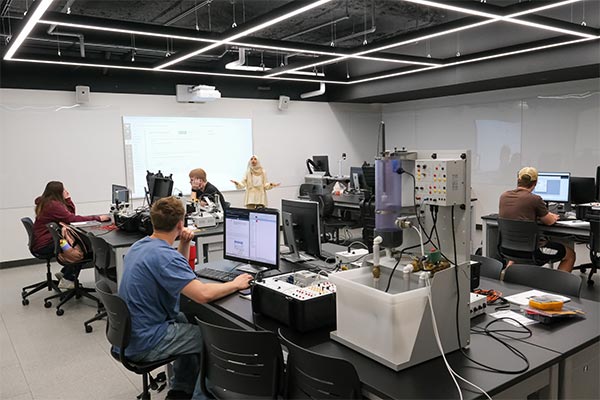
Automation Lab
Room: Information Sciences 1043
In this lab, you’ll dive into programmable logic controllers (PLCs) and industrial automation systems. You’ll simulate real-world control systems—like traffic lights, bottling lines, and wind turbines—using hands-on trainers and software. It’s where you’ll learn how automation powers modern industry.
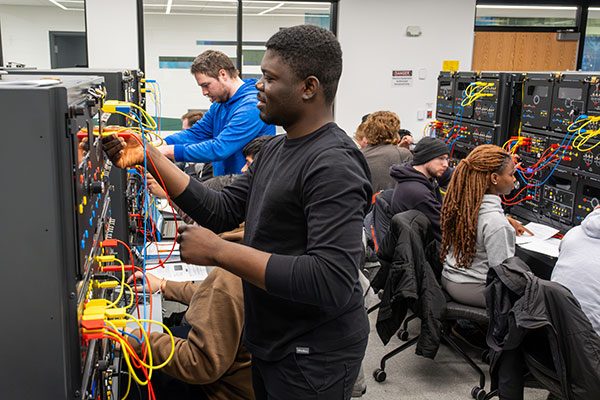
Electrical Machines Lab
Room: Information Sciences 1047
Explore how electrical energy is generated, transformed, and applied. In this lab, you’ll work with AC and DC machines to understand how motors and generators operate in real-world systems. You’ll connect transformers, measure impedance, and analyze power flow—building the foundation for careers in energy, automation, and industrial systems.
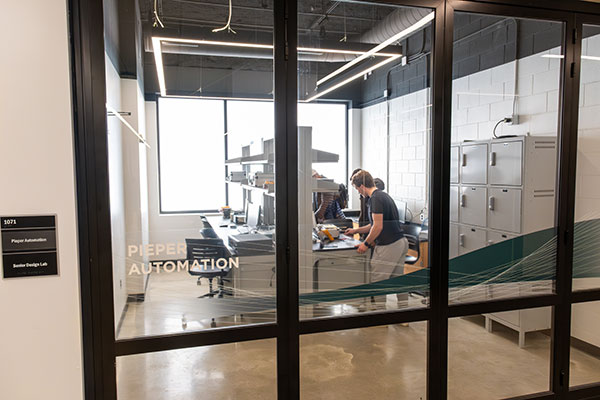
Senior Design Lab
Room: Information Sciences 1071
Your ideas take center stage here. The Senior Design Lab is a dedicated space for capstone projects, where you’ll apply everything you’ve learned to solve complex problems. You’ll collaborate with teammates, meet with faculty mentors, and use advanced tools to bring your designs to life. Whether you’re building a prototype, testing a system, or preparing for a final presentation, this lab is where your education becomes innovation.
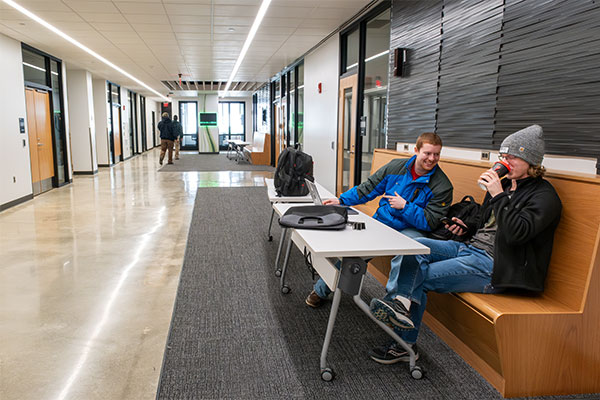
Dahlin Family Community Collaboration Space
Room: Information Sciences 1068
Just outside the electrical engineering labs, this corridor and dedicated room offers a convenient spot to connect before or after class. With tables and benches designed for quick collaboration, it’s a great place to review notes, prep for lab, or catch up with classmates. Named in memory of Bernie Dahlin, the space reflects a commitment to student success and community support—even in the in-between moments.
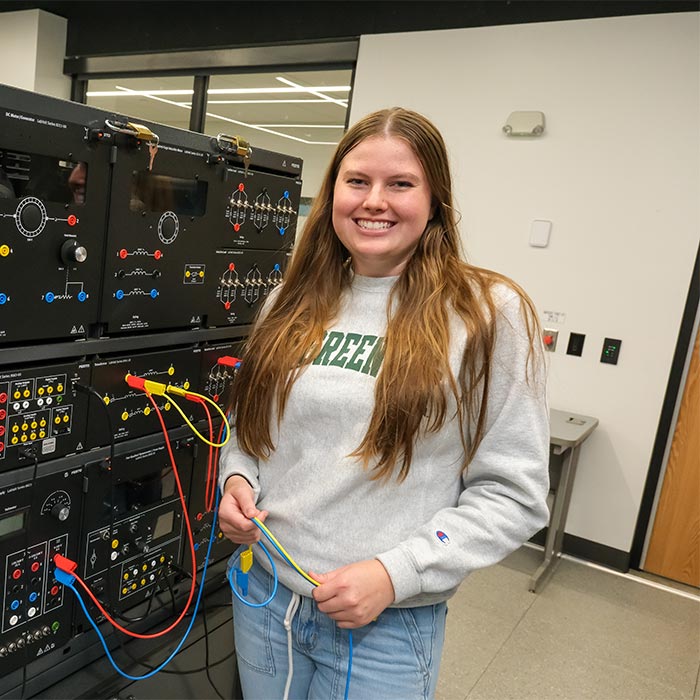
Hands-on Opportunity
"My favorite Electrical Engineering labs was first our Electronic Circuits labs. This was the very first time for me to be able to kind of have a hands-on opportunity and first building those original circuits and this is actually our basics in everything we build off of further in the program. So learning that original equipment like your digital multimeters for the first time and learning how to use a breadboard and putting in those resistors, so it was just a really cool lab just to start off with and get people excited about the program. "
Chloe Meulemans
Electrical Engineering Major

Have Questions?
Whether you're curious about lab access, equipment, or how to get started in electrical engineering, Professor Upal Mahfuz, Chair of Electrical Engineering is here to help.